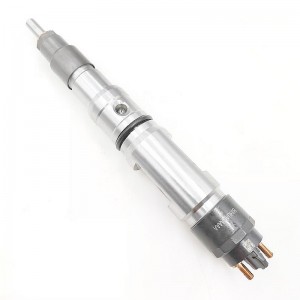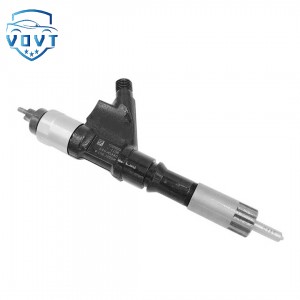Hot Selling New Diesel Injector 23670-09380 Common Rail Injector for Denso Auto Parts
Products Description
| Reference. Codes | 23670-09380 |
| Application | / |
| MOQ | 4PCS |
| Certification | ISO9001 |
| Place of Origin | China |
| Packaging | Neutral packing |
| Quality Control | 100% tested before shipment |
| Lead time | 7~15 working days |
| Payment | T/T, L/C, Western Union, Money Gram, Paypal, Ali pay, Wechat |
Development of fuel injectors
Early stage: The history of fuel injectors can be traced back to the early days of the development of internal combustion engines. At that time, fuel injectors were relatively simple and their functions were relatively basic.
Mechanically controlled fuel injectors: With the advancement of technology, mechanically controlled fuel injectors emerged. For example, in diesel engines, the high-pressure fuel pump is driven by the engine camshaft to deliver fuel to the fuel chambers of each cylinder. However, this fuel supply method changes with the engine speed, making it difficult to achieve the optimal fuel supply control at various speeds.
Development of electronically controlled fuel injectors: In order to more accurately control the injection process, electronically controlled fuel injectors came into being. Since the 1950s, gasoline injection technology has begun to attract attention. The first companies to use gasoline injection on automotive engines appeared between 1950 and 1953 and in 1957. In 1953, Bendix began to develop electronically controlled gasoline injectors and publicly released them in 1957. The emergence of electronically controlled fuel injectors is an important milestone in the development of fuel injectors. It uses an electronic control unit (ECU) to control the opening and closing of the solenoid valve, thereby achieving precise control of the injection timing, injection amount and injection rate. Compared with traditional mechanical control methods, electronically controlled injectors have higher flexibility and accuracy.
Injectors in the common rail system: The emergence of the common rail injection fuel supply system has further promoted the development of injectors. The injectors in the common rail system are equipped with a hydraulic servo system and an electronic control element (solenoid valve). The fuel is delivered to the common fuel supply pipe through a high-pressure oil pump, which realizes the complete separation of injection timing and fuel metering. The injection pressure, injection start point and duration of each cylinder can be adjusted according to the working conditions of the engine, and the best control point of injection can be pursued. It can also achieve a very high injection pressure and perform pre-injection of diesel.
Continuous improvement and innovation: In recent years, injectors have been continuously improved and innovated in structure and performance. For example, in order to adapt to stricter emission regulations and improve fuel economy, fuel injectors continue to optimize in terms of nozzle structure, materials, and control accuracy; different types of fuel injectors such as ball valve type and plate valve type have also appeared to meet different needs; the miniaturization of fuel injectors contributes to the compact design of engines; high-pressure direct injection technology can improve the atomization effect and combustion efficiency of fuel; the development of multi-fuel injectors enables engines to adapt to a variety of different types of fuel.
The development of fuel injectors has always been centered around improving injection accuracy, improving fuel atomization and combustion effects, reducing emissions, improving engine performance and fuel economy, and is closely related to advances in electronic control technology, material science, and other fields.






















